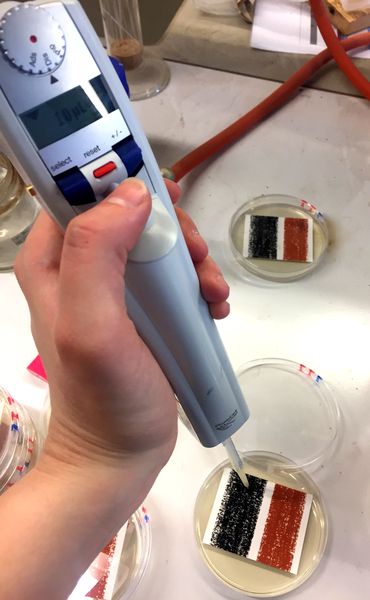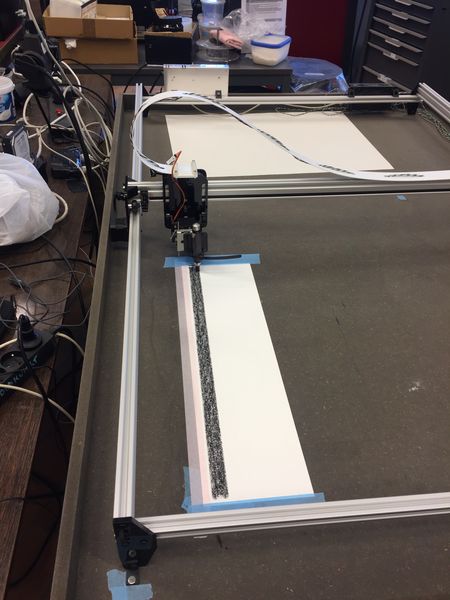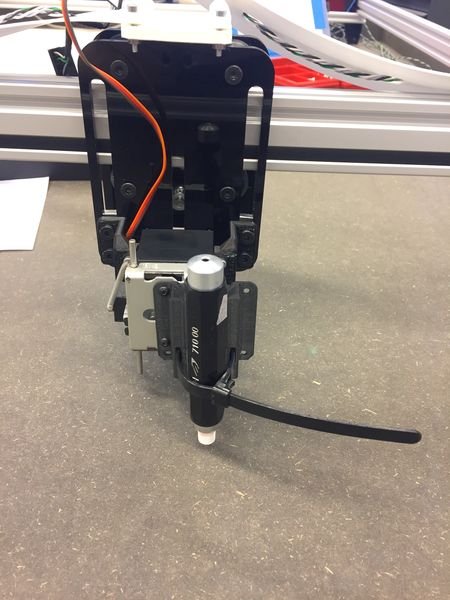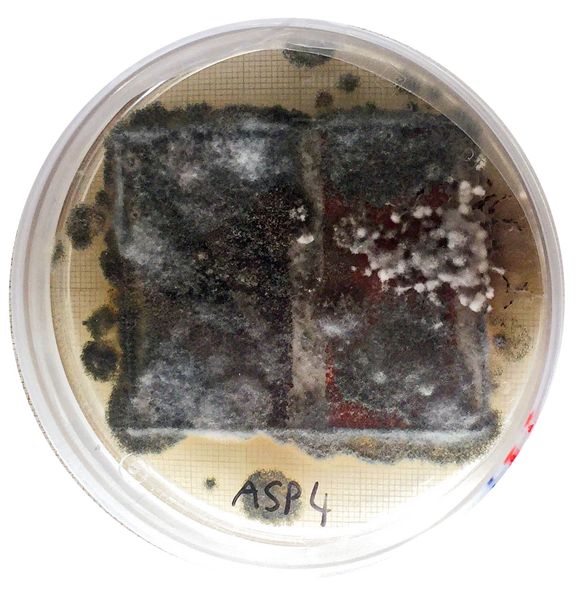
Mathilde Bezon researches the conservation of pastel drawings
Production of pastel mock-ups using a pen plotter as part of a thesis in paper conservation
2023
Pastel mock-ups were produced at the FormLab using a pen plotter as part of a thesis on the treatment of mould in pastels, carried out in the paper conservation department at La Cambre. Artworks using dry pastels are particularly vulnerable to fungal infestation. Curative treatments can be complex due to the sensitivity of the media to abrasion and the application of solutions. The experimental part of this research involved evaluating the effectiveness of various fumigation treatments using essential oil vapours and ethanol and butanol vapours, which could be used as a complement to museum vacuum dry cleaning. Various studies are tending to show that these products could be promising alternatives to biocides such as thymol or ethylene oxide, which are no longer used because of their toxicity for conservators, the environment, and the works of art themselves.
An initial phase of in vitro tests on strains inoculated on a culture medium was carried out to assess the fungicidal and fungistatic properties of the different fumigants. An in-depth test phase was then carried out on in situ strains inoculated onto mock-ups of dry pastels on wove paper consisting of different bands of colour (candle black, vermilion, red ochre, Prussian blue and titan white).
In the field of art conservation, the use of mock-ups plays a crucial role in testing and refining restoration techniques before applying them to the original artwork. The manual creation of mock-ups can be time-consuming and limited in terms of precision. In all scientific research, it is always essential to take the most systematic approach possible to the production of test specimens. Moreover, as mould growth can be influenced by the quantity of nutrient material available, or conversely, inhibited by the presence of certain metals, it was desirable to have as much as possible of the same quantity of media applied to the mock-ups. The samples were therefore produced mechanically using a pen plotter, also called XY plotter.

Figure 1 : Visual of the pen plotter OpenBuilds ACRO System 1510 used for the realization of the mock-ups
A pen plotter is a computer-controlled device that uses pens or other drawing tools to create precise, high-quality drawings, illustrations, or graphics on paper or other media. It operates by translating digital instructions into physical movements, allowing for accurate reproduction of intricate designs. A pen plotter typically consists of a sturdy frame or chassis that supports the plotting mechanism, sitting on top of a flat surface or drawing area where the paper or media is placed, in this case a large pen plotter OpenBuilds ACRO System 1510® (150 cm x 100 cm) was used. The plotting mechanism includes motors, belts, pulleys, and other mechanical components that enable controlled movement along the X and Y axes, allowing the drawing tool to move across the drawing surface. The plotter is connected to a computer or control system that sends instructions to the plotter. These instructions, typically in the form of G-code commands (G-code, short for "Geometric Code," is a programming language used to control computer numerical control (CNC) machines) guide the machine on how to move, position, and operate its various components.

Figure 2 : Visual of the spring-loaded system to hold the media holder
XY plotters are primarily designed for use with pens or drawing tools that dispense ink or ink-like substances, and are not generally compatible with pastel. To adapt the XY plotter to pastel sticks, a bespoke system for holding the media holder, fitted with a spring, was developed by Elias Heunick and printed using a FormLab 3D printer. The spring applied a constant downward force to the media holder, ensuring constant pressure of the pastel sticks on the paper.
A very simple design of a single strip of 60 cm x 2 cm has been created on illustrator and saved in .svg. It was then converted into G-Code instructions thanks to the website https://cam.openbuilds.com/. The G-code was then open in the plotter’s control software. After placing a long piece of paper (held in place with masking tape), adjusting the media holder height and setting the home position of the plotter, the plotting process was executed. All the different color bands were produced using a single G-code, changing the pastel chalk, moving the plotter and reconfiguring the home position for each new band.

Figure 3 : Visual of one of the large strips printed with the pen plotter
In total, ten large strips of mock-ups were printed using the pen plotter. Two batches of 44 samples were then cut to different sizes to test different inoculation and mould incubation procedures. Fumigation treatments were then carried out on the specimens after mould colonies had developed.

Figure 4 : Visuel of one of the samples not treated by fumigation 2 months after the inoculation

Figure 5 : Visual of the inoculation process of the samples
The use of a pen plotter to produce the specimens for the experimental part of this thesis proved to be a very conclusive and interesting experiment. It was confirmed that the use of this type of machine brought a real added value to the work. One of the key advantages of using a pen plotter for pastel mock-ups is the precise control of the drawing tool it offers, resulting in consistent and accurate lines. Another advantage of pen plotters is their repeatability. Once the parameters are set for a particular mock-up, the pen plotter can reproduce it multiple times with high consistency. In conclusion, the use of pen plotters for the realization of numerous and consistent mock-ups of graphic work of arts offers a great versatility and a real ease of experimentation.